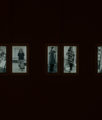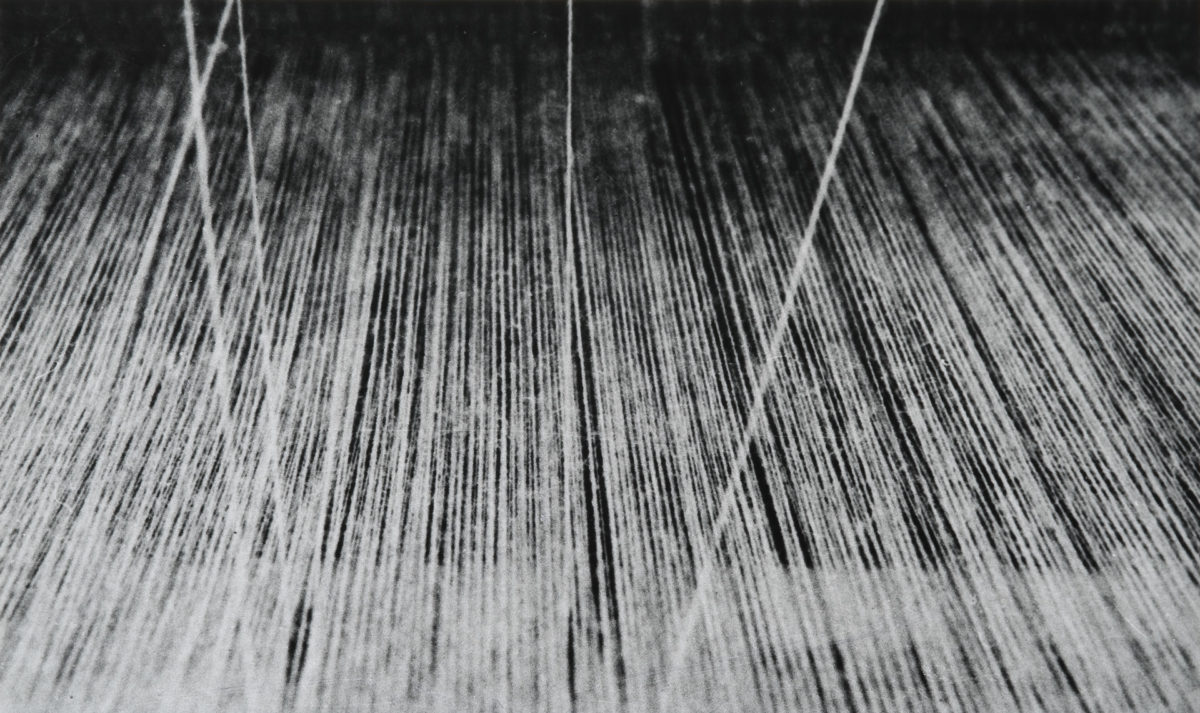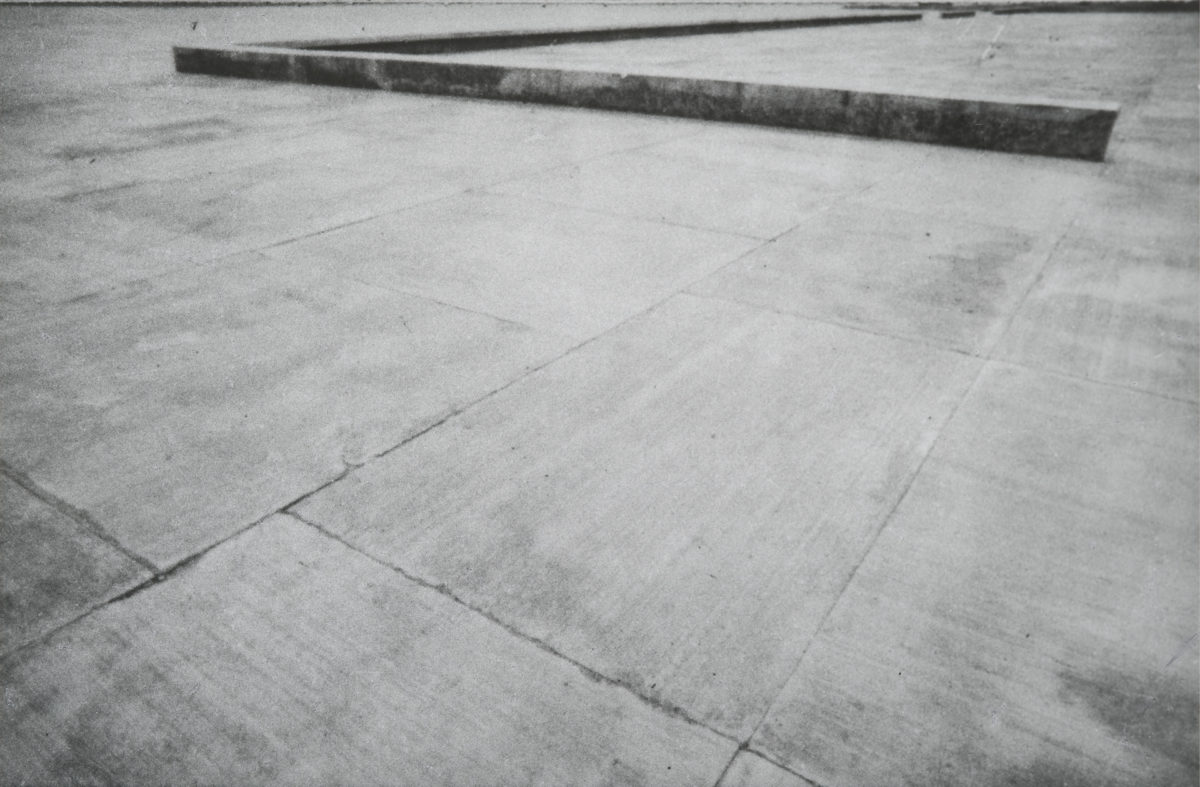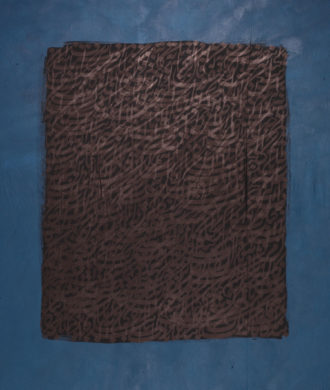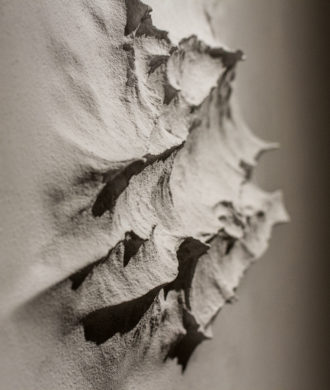NASREEN MOHAMEDI – A LIFE IN SO(U)LITUDE
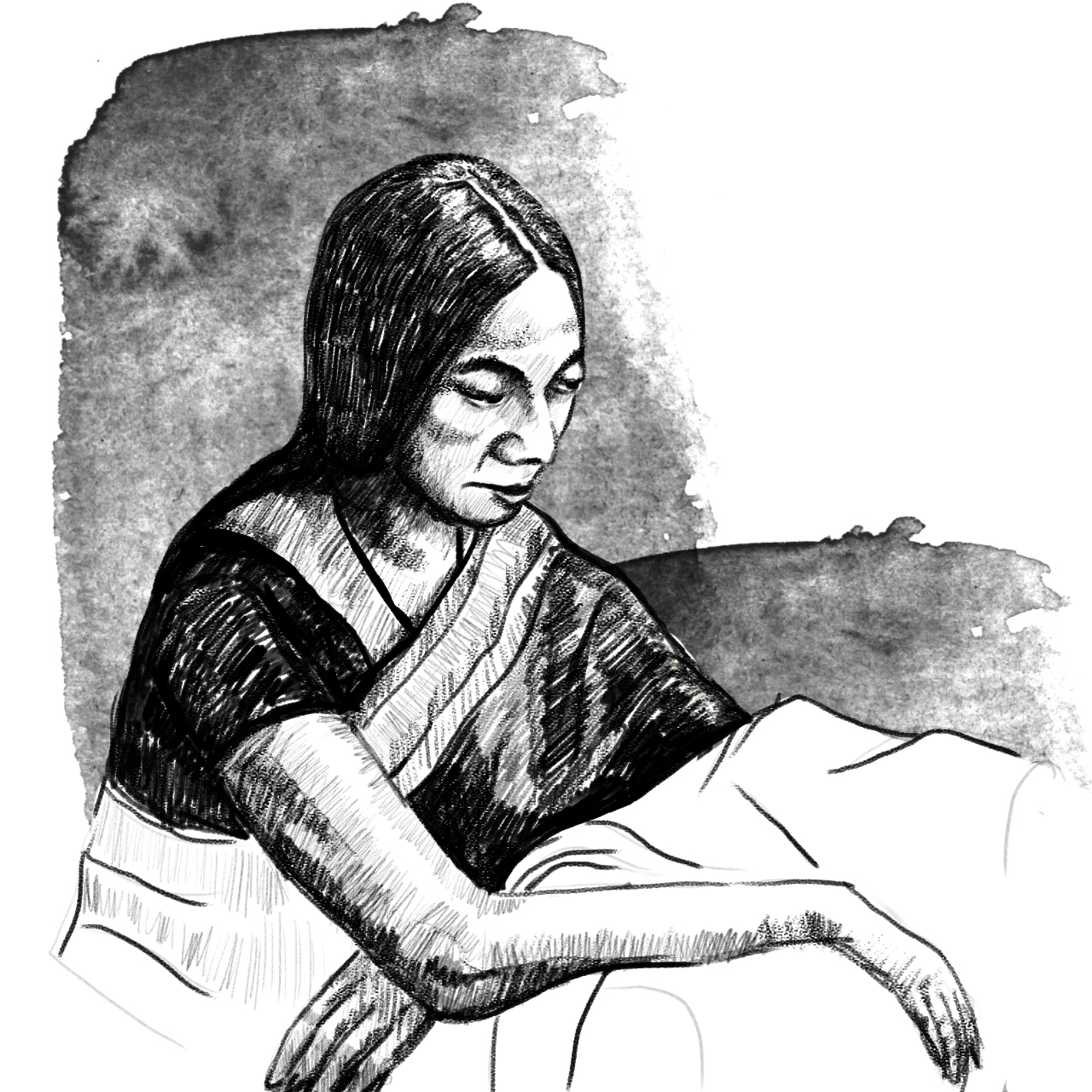 Nasreen Mohamedi
Nasreen Mohamedi
“one creates dimensions out of solitude.”
-NASREEN MOHAMEDI’S DIARY ENTRY, SEPT, 1968
Her work is wise, it is on being. The first time I saw her work years ago amidst the bustle of art festivities and gazed into its depths, I was moved. Her aesthetic was unique, progressive, fragile, yet powerful. Handdrawn labyrinths, ink washes, delicately weathered and stained surfaces calling out to an absence that existed there. And once the grids melted away, I too glided mid-way into the fragmented contours of her works. In Buddhism, that is akin to the point of no-reference, no fixations, when the mind does not commit – it floats. That intersection is not about being at crossroads, making decisions but about the continuum of life – raw and ever-changing. It can feel disconcerting, but it is actually a shift from being stuck on what life and its moments should be, to what the world in essence is. Her work is about that elemental approach to life, earth, art – the infinitesimal quality of time, sound, and space.
THE SEA INTERSECTED WITH … CALLIGRAPHY (SOUND)
NEW HORIZONS ARE NEEDED. IN LIFE.
ALL THE FORCES OF NATURE ARE INTERTWINED.
-NASREEN MOHAMEDI’S DIARY ENTRY, 30TH april, 1969
Nature became her inspiration, and the sea her muse

In the 1950s the art hubs of the world were revved up in a new dialogue. Artists were fleeing to the promised land – America. It was the post-war time, and depression was slowly loosening its clutches on Europe. Picasso was beginning his series on Les Femmes d’Alger, Pollock was conjuring chaos in his canvas, Rothko was balancing his signature colour fields, and the artist’s eye was moving fast from the object to the act of creation. A new language in abstraction was emerging and engulfing the art world. Listening and being true to the sub-conscious was becoming key to one’s artistic pursuit. Nasreen arrived at St Martins School Of Art in 1954 in London amidst these explorations.
If working on her art was her contemplation, then her writings in her diary seem to be her purgation.
A DAY OF THINKING BEGINS.
– NASREEN MOHAMEDI’S DIARY ENTRY
Nasreen worked in Paris for a while after college (with an Atelier in printmaking) before returning to India. Back in Bombay, she worked closely with the legend V S Gaitonde, sharing the studio at the Bhulabhai Desai Institute. Her modernist contemporaries like Tyeb Mehta, MF Hussain, Kishen Khanna, FN Souza (all-male bastion) were refining the language of art in India at that time. To me, her work seems like the gentle wind amongst the stones – quiet, unfettered, unrelenting, ever-expanding.
Walking among vast spaces – space filled with intricate forms, lines arriving filled with various textures, footsteps inside feet – lines arriving and receding into lost space – the horizons keeping the limitless in limits – all forming a whole.
– NASREEN MOHAMEDI’S DIARY ENTRY, 11 JAN, 1968
With Gaitonde (who many acknowledge as her mentor) she dabbled in oil and roller, her compositions of that period are awash in the hues that reflect Gaitonde’s deep canvases. She also traveled throughout the Middle East in the mid-1960s. And by the time she took up her teaching job at M.S. University in Baroda, she was working with pen and ink. Nasreen stayed away from the figurative, large-scale works, from metaphysical abstractions and socio-cultural afflictions to focus on Her artmaking and way of living in the world as she translated what she saw in her mind’s eye onto paper.
In Tate’s room guide on the artist, they write, “Her students have recalled her enthusiasm for observing trees over time, watching the shapes that shifting light created. A dominant form emerging in these works is that of the triangle, relating to branches and leaves, which would recur within her practice in later life.” It is an extraordinary rumination. To think that she was working in the liminal spaces when the artists of the subcontinent where still transversing through shapes.
A tiny dot, a grain of sand
A dot
All leading to the same
A whole
Where mighty winds
blow night and day
To the crest of the moon
to the moon
-NASREEN MOHAMEDI’S DIARY ENTRY, 1968, Kuwait
It all denotes change, change, change – nothing repetitive. Everything moving – grains of sands, all change is inevitable – only the grasping of it is as difficult as important. One has to grasp this entirely and wholly – then there is growth, progress.
– NASREEN MOHAMEDI’S DIARY ENTRY,13 May 1968
Nasreen’s art continues to redefine our understanding of life. In many ways, it is about finding solace, in being sans Home. But Home is the comforts of health in one’s body, of settling (subjugating) into gender-roles, the vitality of childhood memories, of familial joys that outweigh the pain of loss, of building equity in the social system. Her work embraces the strength it takes to leave that and be rootless. And this rootlessness opens her art out to a transcendental world.
Even her studio in Baroda has been described as one that belongs to an ascetic – minimalistic and meticulously clean. Surrounded by trees and filled with ragas from classical Hindusthani music. One can only imagine the sense of serenity that must envelop that room, as she drew late into the night, offering her art that sense of enviable ’emptiness’. That experience is not afforded to all art, it is bestowed on spiritual discourses, on those who have become one in thought.
Music-abstract quality and yet real to such a degree that it is almost life
– NASREEN MOHAMEDI’S DIARY ENTRY, 1960
Already an artist’s artist in Baroda she was well regarded in the circles as an artist dabbling photography, ink or paint in new, unseen ways. A widely popular teacher, her classes on spatial understanding, drew a lot of attention. In her walks, Roobina Karode spoke about her days as her student and reminisces on how Nasreen would break a single hair from her head and show it to her students to highlight the delicate strength each line should be drawn with. Her social circle is also spoken of with great love. It appears in Habib Tanvir‘s memoirs and even in Nilima Sheikh‘s reminiscences of her colleague during her Baroda days. It stands in contrast to the melancholic shadows that her diary entries cast, or, the sense of silence her work celebrates.

DRY SPACE – SAND
BARE SHRUBS FORCING EXISTENCE
NO SUPPORT
AT TIMES COMPLETE ISOLATION
AN INDIVIDUAL
REDUCED TO ITS OWN SHADOW
– NASREEN MOHAMEDI’S DIARY ENTRY
I recently wrote about how our day begins with a thought. A thought that emerges deep from our subconscious as daybreak. Illusive and unfabricated. This stillness lives within us like space. It is both the silence and the spark within; one that cannot be held, measured. Looking at Nasreen Mohamedi’s work is that fleeting thought that you want to stay with but can’t.
Her life, short as it was, was filled with a joie-de-vivre of travel and friends. But amidst this bustle of life, she held within her a calm of loneliness. This state is spoken of by mystics as being in a non-threatening relationship with our frailties. It is the point where loneliness becomes solitude. Her work through the ages has reflected that exercise in meditating over one’s physical struggles to settle into contentment. Not looking for victory or victimhood and to just be. It is this conversation her works had with me that I started looking at her art as being therapeutic, healing, an ocean of calm, rippling, and breaking waves.
She understood and championed her artistic language in her quiet ways across the 3 decades. Standing guard to its radical aesthetic in a period that must have been harder on women artists. In her last years, hands trembling she continued to draw, but her lines were disappearing more and more into nothingness.
REDUCED TO ITS OWN SHADOWS
– NASREEN MOHAMEDI’S DIARY ENTRY
Untitled (late 1960s)
Pema Chödrön, a Buddhist monk, writes,” To be fully alive, fully human and completely awake is to be continually thrown out of the nest. To live fully is to be always in no man’s land, to experience each moment as completely new and fresh. To live is to be willing to die over and over again.” That is the art Nasreen offers the world. That is the wisdom she shares with the living.
Nasreen Mohamedi passed away in 1990 and was laid to rest at Kihim.
The waves of the sea and sand
From the waves in my mind
-NASREEN MOHAMEDI’S DIARY ENTRY, 14 May 1971
Talwar Gallery at New York is presenting Pull with a Direction, an exhibition of work by Nasreen Mohamedi; On till until October 31, 2020.
Pull with a Direction includes works that are being exhibited for the first time, offering a rare glimpse of Mohamedi’s working process in its incipient form.

